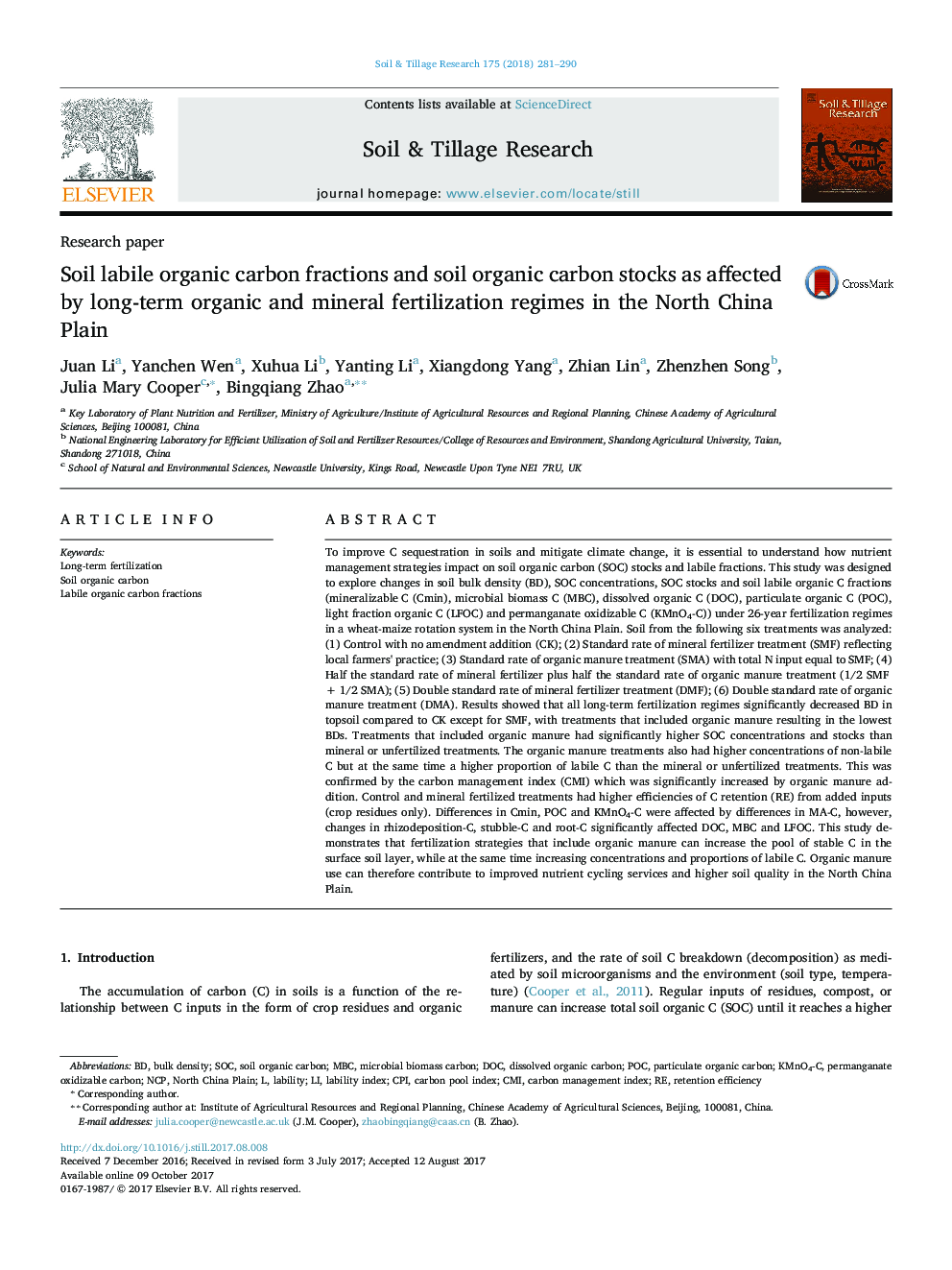| کد مقاله | کد نشریه | سال انتشار | مقاله انگلیسی | نسخه تمام متن |
|---|---|---|---|---|
| 4927443 | 1431828 | 2018 | 10 صفحه PDF | دانلود رایگان |
- Residue-C inputs had highest soil C retention efficiency.
- CMI showed manure use enhances C stocks and nutrient cycling ecosystem services.
- KMnO4-C, POC, Cmin and CMI were particularly responsive to manure C inputs.
- LFOC, DOC and MBC were enhanced by rhizodeposition-C inputs.
To improve C sequestration in soils and mitigate climate change, it is essential to understand how nutrient management strategies impact on soil organic carbon (SOC) stocks and labile fractions. This study was designed to explore changes in soil bulk density (BD), SOC concentrations, SOC stocks and soil labile organic C fractions (mineralizable C (Cmin), microbial biomass C (MBC), dissolved organic C (DOC), particulate organic C (POC), light fraction organic C (LFOC) and permanganate oxidizable C (KMnO4-C)) under 26-year fertilization regimes in a wheat-maize rotation system in the North China Plain. Soil from the following six treatments was analyzed: (1) Control with no amendment addition (CK); (2) Standard rate of mineral fertilizer treatment (SMF) reflecting local farmers' practice; (3) Standard rate of organic manure treatment (SMA) with total N input equal to SMF; (4) Half the standard rate of mineral fertilizer plus half the standard rate of organic manure treatment (1/2 SMF + 1/2 SMA); (5) Double standard rate of mineral fertilizer treatment (DMF); (6) Double standard rate of organic manure treatment (DMA). Results showed that all long-term fertilization regimes significantly decreased BD in topsoil compared to CK except for SMF, with treatments that included organic manure resulting in the lowest BDs. Treatments that included organic manure had significantly higher SOC concentrations and stocks than mineral or unfertilized treatments. The organic manure treatments also had higher concentrations of non-labile C but at the same time a higher proportion of labile C than the mineral or unfertilized treatments. This was confirmed by the carbon management index (CMI) which was significantly increased by organic manure addition. Control and mineral fertilized treatments had higher efficiencies of C retention (RE) from added inputs (crop residues only). Differences in Cmin, POC and KMnO4-C were affected by differences in MA-C, however, changes in rhizodeposition-C, stubble-C and root-C significantly affected DOC, MBC and LFOC. This study demonstrates that fertilization strategies that include organic manure can increase the pool of stable C in the surface soil layer, while at the same time increasing concentrations and proportions of labile C. Organic manure use can therefore contribute to improved nutrient cycling services and higher soil quality in the North China Plain.
Journal: Soil and Tillage Research - Volume 175, January 2018, Pages 281-290
